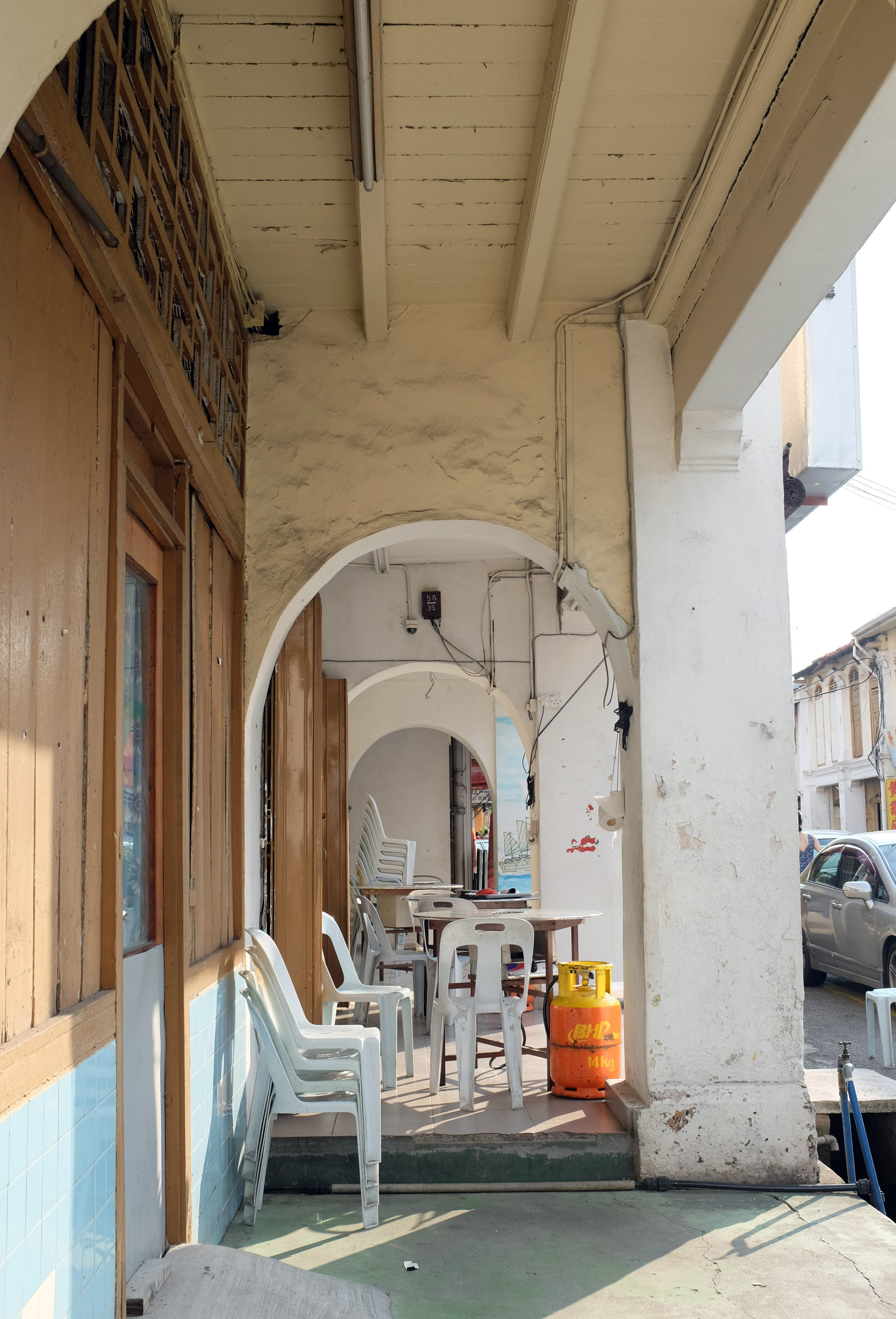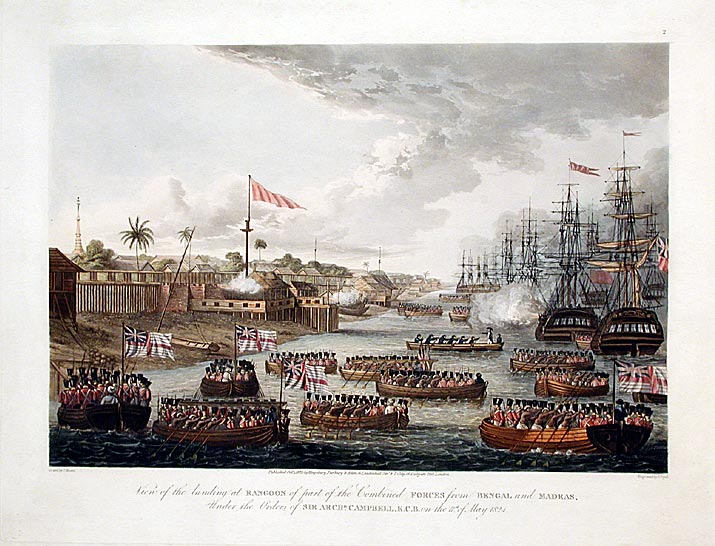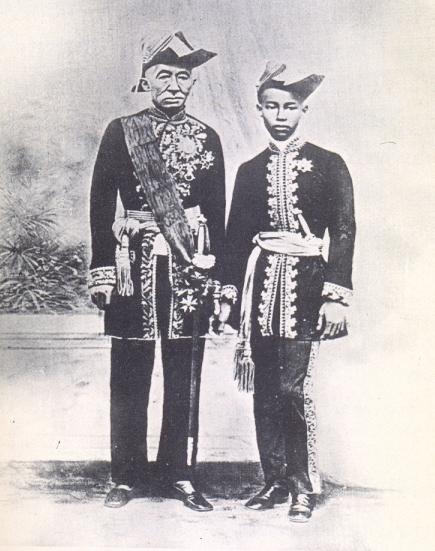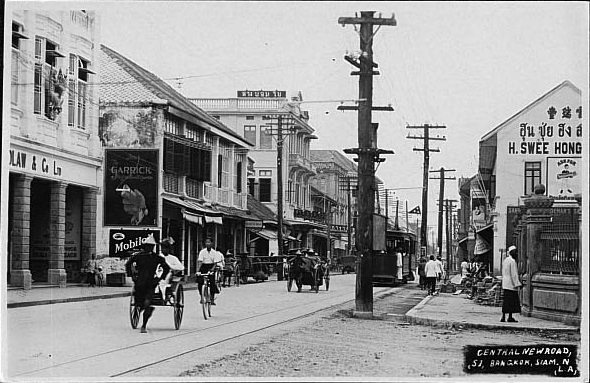|
Bamrung Mueang Road
Bamrung Mueang Road (, ) is the second paved road in Bangkok. It was built in 1863 after Charoen Krung Road, in the reign of King Mongkut (Rama IV). It cut through the old fortified city of Rattanakosin Island from west to east, beginning near the Grand Palace, passing the Giant Swing and running eastward to Khlong Phadung Krung Kasem. It continues on as Rama I Road after crossing Kasat Suek Bridge. It was the main thoroughfare as the city expanded eastward and away from the Chao Phraya river in the early 20th century. Originally, it was called unofficially ''"Thanon Ree"'' (ถนนรี, "diagonal road") or ''"Thanon Sao Chingcha"'' (ถนนเสาชิงช้า, "giant swing road"). In the reign of King Chulalongkorn (Rama V), the road was made 9 meters (29.5 feet) wide as seen today. In the early Rattanakosin period (reigns of King Buddha Yodfa (Rama I) to King Nangklao Nangklao (born Thap; 31 March 1788 – 2 April 1851), also known by his regnal name Rama I ... [...More Info...] [...Related Items...] OR: [Wikipedia] [Google] [Baidu] |
Buddha Yodfa
Phutthayotfa Chulalok (born Thongduang; 20 March 1737 – 7 September 1809), also known by his regnal name Rama I, was the founder of the Rattanakosin Kingdom (now Thailand) and the first King of Siam from the reigning Chakri dynasty. He ascended the throne in 1782, following the deposition of King Taksin of Thonburi. He was also celebrated as the founder of Rattanakosin (now Bangkok) as the new capital of the reunited kingdom. Rama I, whose given name was Thongduang, was born from a Mon male line descent family, great-grandson of Kosa Pan. His father served in the royal court of the Ayutthaya Kingdom. Thongduang and his younger brother Boonma served King Taksin in wars against the Burmese Konbaung dynasty and helped him in the reunification of Siam. During this time he emerged as Siam's most powerful military leader. Thongduang was the first '' Somdet Chao Phraya'', the highest rank the nobility could attain, equaled to that of royalty. In 1782, he took control of Siam and ... [...More Info...] [...Related Items...] OR: [Wikipedia] [Google] [Baidu] |
Streets In Bangkok
Streets is the plural of street, a type of road. Streets or The Streets may also refer to: Music * Streets (band), a rock band fronted by Kansas vocalist Steve Walsh * ''Streets'' (punk album), a 1977 compilation album of various early UK punk bands * '' Streets...'', a 1975 album by Ralph McTell * '' Streets: A Rock Opera'', a 1991 album by Savatage * "Streets" (Doja Cat song), from the album ''Hot Pink'' (2019) * "Streets", a song by Avenged Sevenfold from the album '' Sounding the Seventh Trumpet'' (2001) * The Streets The Streets is an English musical project led by vocalist and multi-instrumentalist Mike Skinner (musician), Mike Skinner. The project was founded in the early 90s, while Skinner was still a teenager; however, no music would formally eventuat ..., alias of Mike Skinner, a British rapper * "The Streets" (song) by WC featuring Snoop Dogg and Nate Dogg, from the album ''Ghetto Heisman'' (2002) Other uses * ''Streets'' (film), a 1990 American horror film ... [...More Info...] [...Related Items...] OR: [Wikipedia] [Google] [Baidu] |
Thai Chinese People
Thai Chinese (also known as Chinese Thais, Sino-Thais) are persons of Chinese descent in Thailand. Thai Chinese are the largest mixed group in the country and the largest overseas Chinese community in the world with a population of approximately 9.3–10 million people, accounting for 11–14 percent of the country's total population as of 2012. It is also one of the oldest and most prominently integrated overseas Chinese communities, with a history dating back to the 1100s. Slightly more than half of the ethnic Chinese population in Thailand trace their ancestry to Chaoshan, proven by the prevalence of the Teochew dialect among the Chinese community in Thailand as well as other Chinese languages. The term as commonly understood signifies those whose ancestors immigrated to Thailand before 1949. The Thai Chinese have been deeply ingrained into all elements of Thai society over the past 200 years. The present Thai royal family, the Chakri dynasty, was founded by King Rama I ... [...More Info...] [...Related Items...] OR: [Wikipedia] [Google] [Baidu] |
Five-foot Way
A five-foot way ( Malay/ Indonesian: ''kaki lima'') is a roofed continuous walkway commonly found in front of shops in Malaysia, Singapore, and Indonesia which may also be used for commercial activity. The name refers to the width of the passageway, but a five-foot way may be narrower or wider than . Although it looks like European arcade along the streets, it is a building feature that suits the local climate, and characterizes the town-scape and urban life of this region. It may also be found in parts of Thailand, Taiwan, and Southern China. The term might be translated into Hokkien as (五脚基); it is also called (亭子脚). The term "five-foot" describes the width of the covered sidewalks. The overhanging canopy, roof extension or projected upper floor on top of the five-foot ways provides a cover to shield pedestrians from the sun and the rain. As the ground floor of most commercial buildings in downtown areas is occupied by shops or eating places, the five-foot ways ... [...More Info...] [...Related Items...] OR: [Wikipedia] [Google] [Baidu] |
Shophouse
A shophouse is a building type serving both as a residence and a commercial business. It is defined in the dictionary as a building type found in Southeast Asia that is "a shop opening on to the pavement and also used as the owner's residence", and became a commonly used term since the 1950s. Variations of the shophouse may also be found in other parts of Asia; in Southern China, Hong Kong, and Macau, it is found in a building type known as ''Tong lau'', and in towns and cities in Sri Lanka. They stand in a terraced house configuration, often fronted with arcades or colonnades, which present a unique townscape in Southeast Asia, Sri Lanka, and South China. Design and features * Site and plan: Shophouses were a convenient design for urban settlers, providing both a residence and small business venue. Shophouses were often designed to be narrow and deep so that many businesses can be accommodated along a street. Each building's footprint was narrow in width and long in depth ... [...More Info...] [...Related Items...] OR: [Wikipedia] [Google] [Baidu] |
Nangklao
Nangklao (born Thap; 31 March 1788 – 2 April 1851), also known by his regnal name Rama III, was the third Monarchy of Thailand, king of Siam from the Chakri dynasty, ruling from 21 July 1824 to 2 April 1851. Nangklao was the eldest surviving son of King Rama II. His mother Sri Sulalai was one of Rama II's secondary wives. Nangklao was likely designated as heir by his father. His accession was uncontested and smoothly confirmed by the grand council. Foreign observers, however, falsely perceived him as having usurped the prior claim of his younger half-brother Prince Mongkut, who was born to Queen Sri Suriyendra and thus "Legitimacy (family law), legitimate" according to Western customs. Under the old concept of Thai monarchy, however, a proper king must emulate Maha Sammata in that he must be "elected by the people." Ironically, Mongkut may have later contributed to this misconception, when he feared that his own accession might be perceived by foreign observers as a usurpation. ... [...More Info...] [...Related Items...] OR: [Wikipedia] [Google] [Baidu] |
Chulalongkorn
Chulalongkorn (20 September 1853 – 23 October 1910), posthumously honoured as King Chulalongkorn the Great, was the fifth king of Siam from the Chakri dynasty, titled Rama V. Chulalongkorn's reign from 1868 until his death in 1910 was characterised by the modernisation of Siam, governmental and social reforms, and territorial concessions to the British and French empires. As Siam was surrounded by European colonies, Chulalongkorn, through his policies and acts, ensured the independence of Siam. Chulalongkorn was born as the son of Mongkut, the fourth king of Siam. In 1868, he travelled with his father and Westerners invited by Mongkut to observe the solar eclipse of 18 August 1868 in Prachuap Khiri Khan Province. However, Chulalongkorn and his father both contracted malaria which resulted in his father's death. The 1893 Franco-Siamese crisis and Haw wars took place during his reign. All his reforms were dedicated to ensuring Siam's independence given the increasing ... [...More Info...] [...Related Items...] OR: [Wikipedia] [Google] [Baidu] |
Charoen Krung Road
Shophouses along Charoen Krung road with the Sathorn Unique Tower in the vicinity (2021) Charoen Krung Road (, ) is a major road in Bangkok and the first in Thailand to be built using modern construction methods. Built during 1862–1864 in the reign of King Mongkut (Rama IV), it runs from the old city centre in Rattanakosin Island, passes through Bangkok's Chinatown, continues into Bang Rak district, where it formerly served the community of European expatriates, and ends in Bang Kho Laem. Construction of the road marked a major change in Bangkok's urban development, with the major mode of transport shifting from water to land. Charoen Krung Road was Bangkok's main street up to the early 20th century, but later declined in prominence. It is still home to many historic buildings and neighbourhoods, which are beset by changes as extension of the underground MRT is poised to drive new development. History Until the mid-19th century, the primary means of transport in Bangkok (a ... [...More Info...] [...Related Items...] OR: [Wikipedia] [Google] [Baidu] |
Kasat Suek Bridge
Kasat Suek (, ) refers to an intersection and its corresponding bridge on the periphery of Pom Prap Sattru Phai and Pathum Wan Districts, Bangkok. The intersection is also known by the names Bobae Intersection and Yotse Intersection. Characteristics and history Kasat Suek Intersection is a four-way intersection between Rama I, Krung Kasem, and Bamrung Mueang Roads, considered to be the end of Bamrung Mueang and the beginning of Rama I. It takes its name from Kasat Suek Bridge, which is on Rama I Road next to the intersection. Kasat Suek Bridge is composed of two sections—one across the railway from the nearby Bangkok railway station—and the other across from Khlong Phadung Krung Kasem (Phadung Krung Kasem Canal) towards the intersection. Formerly a wooden bridge called "Yotse", (a name that remains more popular than "Kasat Suek" and is still used unofficially today for both the bridge and the general surrounding area). In 1928, during the reign of King Prajadhipok (Rama VII) ... [...More Info...] [...Related Items...] OR: [Wikipedia] [Google] [Baidu] |
Rama I Road
350px, Rama I Road viewed from Chaloem_Phao__Junction.html" ;"title="Siam BTS station skywalk near Chaloem Phao Junction">Siam BTS station skywalk near Chaloem Phao Junction. Rama I Road (, ; usually shortened to , ) is a road in Bangkok. It starts from the end of Bamrung Mueang Road where it intersects Krung Kasem Road at the border between the districts of Pom Prap Sattru Phai and Pathum Wan. From this point, it crosses Kasat Suek Bridge, also known as Yotse Bridge, which runs above Khlong Phadung Krung Kasem and the railway running from nearby Hua Lamphong railway station. Continuing east, it ends at Ratchaprasong intersection, a four-way intersection of Ratchadamri Road, Rama I Road and Phloen Chit Road. The total distance is . Rama I Road runs through the shopping district Siam, with many department stores being situated on the road such as MBK Center, Siam Discovery, Siam Paragon, and Siam Square. Other landmarks on the road include the Jim Thompson House, the Ban ... [...More Info...] [...Related Items...] OR: [Wikipedia] [Google] [Baidu] |





